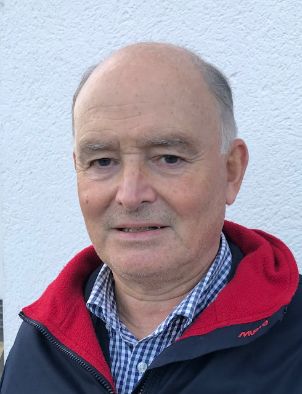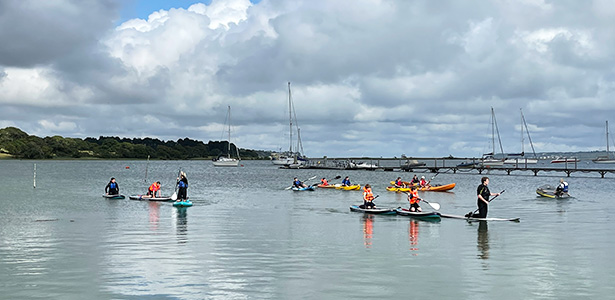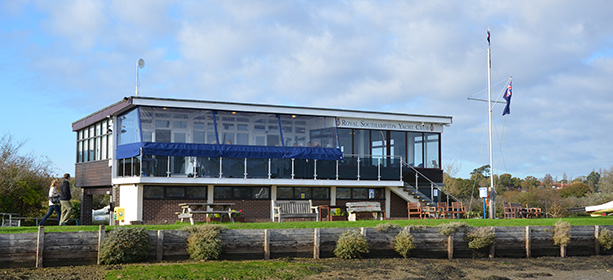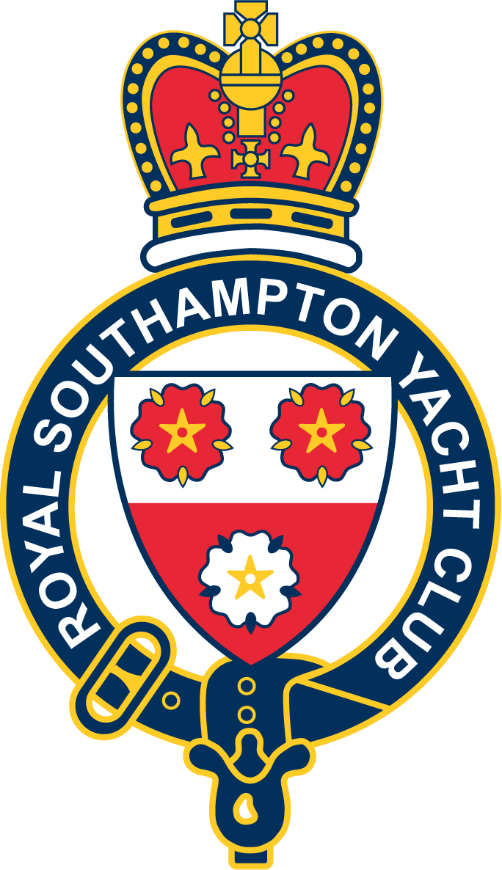About us
Meet the team

Guy Darby
Commodore

Richard Colegrave
Rear Commodore – House

Ginny Bennett
Rear Commodore – Sailing

Simon Derrick
Finance Director
Origins
The origins of the Royal Southampton Yacht Club go back to the West Quay Amateur Regatta Club in 1858, and which was renamed the Southampton Amateur Regatta Club in 1862. Frequent races were held in the waters opposite the old West Quay, before the extensive development of the Southampton waterfront.
In 1868 a group of Members split from this club to form a new Southampton Regatta Club, and in 1875 the Club voted to change its name to the Southampton Yacht Club, and was awarded the right to use the Town Arms of Southampton. These form the centrepiece of the Clubs ‘belted Crest’, the belt and buckle being a heraldic device denoting membership of a group, as in a Scottish clan badge.
Two years later in 1877 permission was granted by Royal and Admiralty Warrant for the new club to style itself the Royal Southampton Yacht Club. As a Royal club RSYC Members have the privilege of wearing a defaced blue ensign, bearing a crown in the centre of the Union flag. Additionally, the Club Crest is surmounted by a crown, indicating its royal status.
Earl Mountbatten of Burma was Admiral of the club from 1965 until his tragic death in 1979. RSYC is currently privileged to have as its Admiral, HRH Prince Michael of Kent.
Premises and Activities
The Southampton Regatta Club initially based itself in the George Hotel in the town. When that burnt down a few years later they moved to the first floor of 32 High Street, where they had a Club Room and two billiard rooms. In 1875 this too caught fire! At this point Members decided to raise the necessary investment for a purpose-built headquarters.
A very imposing building was accordingly constructed in the characteristic Victorian Domestic Gothic style at 79 Above Bar, Southampton. The Foundation Stone was laid in 1885 by the Marquis of Ailsa, the Commodore of the Club.
It was said that the building could have been mistaken for the Town Hall, had it not been for the four brass cannon outside. The arms of the Club, modelled in terracotta, were above the door.
At this time the Club had 400 Members, approximately half of whom lived in or near Southampton. To cover the costs of the land, building and furniture – a total of £7,200 – £2,000 was raised from club assets, £2,500 through sale of Bonds to Members and £2,700 by mortgage. It included a high lookout tower. Facilities also included dining, smoking, billiard, pool, reading, chess and card rooms, as well as a library and dressing rooms, plus kitchens and stewards rooms.
It was very much a Gentleman’s Club, in an era when yacht racing was the preserve of large, very expensive yachts, and their affluent owners lifestyle reflected their status. Ladies were little in evidence. The Club was a notable landmark in the city, and continued to flourish in these prestigious premises up to and through the First and Second World Wars. WWII took its toll but the building miraculously survived the blitz on Southampton of the night of 30th November 1940.
It was some 72 years after the construction of the Above Bar building that the then Membership decided on a move to new premises, rather than addressing the extensive repairs which were by then needed. Land for shop development in the area was by then in great demand so it made financial sense to accept an offer of £106,000 for the building, which was subsequently demolished.
By now there was virtually no yachting activity within the City itself, Southampton having developed into a major port, the so-called Gateway to the Empire. Premises were accordingly found further inland at Northlands Road. This was conveniently just across the road from the Hampshire Cricket Club ground, and just down the road from the Dell, then the home of Southampton Football Club.
The Club moved to its new premises in the extensively refurbished former Court Royal Hotel in Northlands Road, Southampton in 1957.
This provided two bars, one strictly members only, a large dining room, a snooker room and Admirals Room, plus offices and several flats, which were let. It had the additional benefit of being surrounded by pleasant gardens, and there was a large car park. The day to day running of the Club was in the hands of the Chairman of committees, Charles Hiscock, father of Eric Hiscock, famous for his accounts of cruising around the world in Wanderer and Wanderer II and III.
Racing activities, in the more numerous, smaller boats that had replaced the earlier grand yachts continued on the Solent including at the Club’s principal Regatta on the first day of Cowes Week. Prior to the sale of the Above Bar building Members agreed that a sum should be reserved for the purchase of a waterside site, in addition to the city-based Clubhouse, to continue to foster the yachting activities of the Club.
In 1964, with the funds reserved from the sale of the Above Bar premises, the Club purchased land in Gins Lane on the Beaulieu River a couple of miles from the river’s mouth on the Solent. A clubhouse was constructed at the site together with a 270 foot walkway leading to a shore pontoon. Later, a mid-river pontoon was added and buoy moorings are also available.
Over time, Northlands Road proved uneconomic to maintain, and despite, or perhaps inspired by, the purchase of Gins, Members opted for a location adjacent to the water for their city clubhouse. In 1987 the decision was made to move to a purpose built headquarters at the new Ocean Village Marina, which was then being created around Southampton’s old Princess Alexandra Dock, the former cross channel ferry berth, at the head of Southampton Water.
As there were two massive reinforced structures which could not easily be demolished at the chosen site, it was decided to make a virtue of necessity by building out over them, resulting in a spectacular commanding position over the marina. The foundation stone was laid by the Admiral, HRH Prince Michael of Kent, in September 1987.
The new building with bar, dining rooms, function rooms and offices was opened on October 7th 1988. The new location breathed fresh life into the activities of the Club, with many new members with yachts in the marina, Town Quay and other nearby locations attracted to the weekly racing activities as well as the outstanding shore facilities.
In the 90’s and 2000’s the cruising and racing programmes were further developed and enhanced. The Club has been the UK’s leading organiser of Double-handed racing begun in 1981 by Members Jan and Neil Cox. The Club is still fully involved in the Cowes Week Regatta and awards trophies on the first day of the event each year. In 2012 the Club was selected to host the spectacular J-class racing in the Solent and a number of the Club’s team of experienced race officers assisted with the management of the 2012 Olympic sailing at Weymouth.
In the face of changing social and demographic patterns, in 2018 the Club took the decision to change itself again to meet the needs of the next generation of members and sailors. A substantial investment was made in the Gins Clubhouse which became the Club’s principal waterside presence. The Ocean Village premises were vacated whilst maintaining an administrative base and a strong seam of social activities in the City.
The Club’s racing and cruising programmes continue as before and today, Gins remains one of the most desirable Solent destinations for Members and visiting sailors. Its bar, dining room and terrace give onto spectacular views of the river and the Solent. It is the also the focus of the Club’s dinghy sailing.
Sources
Yachter archives – Articles by Tony Porter and David Robertson
Southern Evening Echo 15 May 1975
British Yachts and Yachtsmen – pub. 1907
RSYC Trust
Please find below a link to our Trust page


Reciprocal Clubs
Please find below a link to the list of clubs with whom the RSYC has formed reciprocity.
